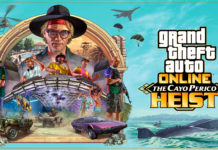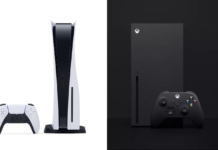 It’s time for another edition of “Iwata Asks,” and this time he’s taking a look at… New Super Mario Bros. Wii? But didn’t he just do one of those?
It’s time for another edition of “Iwata Asks,” and this time he’s taking a look at… New Super Mario Bros. Wii? But didn’t he just do one of those?
Yes, in fact, he did. But as it turns out, that was simply volume 1, wherein he spoke with Senior Managing Director, EAD General Manager, and Mario creator Shigeru Miyamoto. This time, he has Toshihiko Nakago, the President of SRD CO., LTD, and EAD Software Development Department General Manager Takashi Tezuka as his guests.
And this one promises to be a fun ride, as before they look at Super Mario Bros. in the present day, they look at Super Mario Bros. (and Zelda) in the past.
As before, I’m going to try to show some restraint and post some of the more choice excerpts found within.
…and I’m failing already. I can’t pass up a chance to share how one of my favorite games, Balloon Fight, helped influence the development of Super Mario Bros.:
Iwata
There were a lot of games that were developed both for the arcade and the Famicom. HAL Laboratory worked on the home console version of Balloon Fight while SRD…Nakago
We worked on the arcade version. Then after we’d completed it, we wondered why the player’s movements were smoother on the home version developed by HAL and asked Iwata-san for some advice.Iwata
That’s when I told Nakago-san everything I knew. One thing I recommended was that instead of calculating the character’s position using integers, they should also calculate it using decimal points, thereby doubling the precision. In this way, calculating gravity, buoyancy, acceleration and deceleration all become more precise and the movements look smoother. That’s the kind of thing I explained at the time.Nakago
When Iwata-san explained all this to me, the scales fell from my eyes! (laughs) But I remember Miyamoto-san complaining: “Why do you have to go to another company to find this stuff out?” (laughs)Iwata
I was actually really pleased to be asked.Nakago
Is that right? (laughs)Iwata
Well, I hoped it would prove useful, and I believe that it did when you came to work on Super Mario Bros.Nakago
Yes, it proved incredibly useful. The reason why Mario moves so smoothly in the underwater stages is thanks to the guidance I was given by you.Iwata
At that point, I had been involved in the development of a whole variety of software while working at HAL Laboratory, but I’d always thought: “It’s only the main Mario series that I’ve had nothing to do with.” But it turns out that because of what I told Nakago-san all those years ago, I was actually indirectly involved in a Mario title. When I found that out, I was rather pleased! (laughs)
Those familiar with the Japan-only NES/Famicom title “Devil World” know it to be a game very similar to Pac-Man, albeit with some religious themes. That makes this part all the more interesting:
Iwata
So after joining Nintendo, what was the first job you worked on alongside Miyamoto-san?Tezuka
When I was here part-time, I worked on Super Punch-Out!! Then once I joined the company full-time, the first job I did was… What was it again? Oh, that’s right! It was Devil World. It was a dot-eating game.Iwata
It was a game along the lines of Pac-Man.Tezuka
Right. But at that time, I hadn’t heard of Pac-Man…Iwata
Wait! Hang on just a second! Are you telling me that someone who joined Nintendo in order to make video games and who is currently the head of the Software Development Department entered the company in 1984 without knowing Pac-Man?Tezuka
I’d never heard of it! (laughs)Iwata
That’s unbelievable! (laughs)All
(laughter)Tezuka
Do you find that shocking?Iwata
No, I’m just a little taken aback, that’s all! (laughs)Tezuka
Then when I played Pac-Man for the first time, I just thought: “Well, this is a fun game!”Iwata
(laughs)
Now we get to when they began to develop Super Mario Bros. and The Legend of Zelda– at the same time:
Nakago
And Excitebike was released in November. As Excitebike was being developed in Tokyo, I went on a lot of business trips there together with Miyamoto-san and we’d often stay over in a hotel. That was right at the start of the bubble economy and there were times when it would be really hard to secure a hotel room. There were even times when we slept in the same bed.Iwata
…What!? (laughs)All
(laughter)Nakago
That’s how we made Excitebike. Then after that, we began to work on Super Mario and The Legend of Zelda at the same time.Iwata
Right, those two titles were both developed at the same time. It’s surprising how many game fans aren’t aware of this, but the first Super Mario and Zelda titles were made simultaneously, with the same staff. It’s something that seems completely unthinkable now! (laughs)Nakago
Occasionally you’d get a transfer of ideas from one game to the other. For instance, there are bars of fire in Super Mario, aren’t there?Iwata
You mean the spinning bars of fire attached to the castle walls that you encounter as you make your way along the corridor to fight Bowser.Nakago
Right. Those first appeared right in the centre of the screen in Zelda.Iwata
…Really!?Nakago
Yes, that idea originally comes from Zelda. We thought it would work better in Mario, so we transferred it across. I think it was Miyamoto-san who suggested it. Or perhaps it was Tezuka-san…
This next piece is surprising:
Iwata
How did Super Mario and Zelda come about in the first place?Tezuka
The initial concept behind Super Mario was that we wanted a dynamic, athletic kind of game that would be set on land, sea and air and that would feature a large character.Iwata
I’ve heard that the original plan was to have a huge Mario.Tezuka
Right, we wanted a Mario that was twice the size of the regular one. But I don’t really recollect whether or not we’d decided to use Mario from the start.Iwata
Do you think you could try to remember? (laughs)Tezuka
I’m certain that at the start, we had a 16 X 32 pixel square that moved about…Nakago
At first, you moved a square object about a single non-scrolling screen.Iwata
Really? So it all started with a square object that you could move around a single screen?Nakago
That’s right. At the time, having a square that moved was groundbreaking. SRD had experimented with a square object that simply moved in a wave-like manner.Iwata
And that’s where Super Mario began?Nakago
Right. That’s why at that time, you couldn’t even jump.Iwata
And why did that square object become Mario?Tezuka
I more or less remember this one! (laughs) Next door to the development room was the Sales and Marketing Division. The head of that department at the time was a pretty approachable guy, and though it might be hard to imagine it happening nowadays, I got him to show me the sales figures.Iwata
At that point, you were a new employee who had just joined Nintendo.Tezuka
Right. I was still in my first year at the company.Iwata
So a new employee just went up to the head of the Sales Division and asked to be shown the sales figures?Tezuka
Well, at lunchtime I’d often wander to various places and chat to people from other departments. So I’d become friendly with people that way. Anyway, I was shown the sales figures and I saw that although Mario Bros. on the Famicom had been released over a year previously, it was still selling consistently well.Iwata
So you saw those sales figures and a light bulb lit up above your head?Tezuka
Right. I thought: “This Mario is pretty popular.” I recall that I mentioned to Miyamoto-san that Mario was selling consistently well and he said, “Mario seems like the way to go.”Iwata
In the last Iwata Asks interview, Miyamoto-san spoke about how he had originally named Mario “Mr. Video” and wanted to use him in every game he made. But at that time, Mario hadn’t yet become an established figure and people at the company didn’t always have this character at the centre of their thoughts.Tezuka
I think that perhaps he’d already considered the idea of using Mario, but by seeing those sales figures, he must have became a lot more confident that this was the way to proceed.
It’s hard to imagine that Super Mario Bros. began without anything to do with Mario at all.
And then we have how Zelda began:
Iwata
I see. So while that square object was turning into Mario, how did Zelda get started?Tezuka
I don’t really remember when we first began Zelda. (laughs) But I know it started with the dungeons.Nakago
At the very start, we were developing the game using the arcade system. You mentioned it a little earlier, Iwata-san…Iwata
We’re talking about the Nintendo Vs. System, right?Nakago
I remember that we started out using the Vs. System.Iwata
So it wasn’t originally made for the Famicom Disk System.Nakago
Right. Anyway, as Tezuka-san just said, it began with the creation of the structure of the dungeons. There were about five mountains on the screen and you’d go into the middle of them and there’d be a dungeon. That was all there was to it.Iwata
So at the start it was a game where you only went around dungeons.Nakago
That’s right. But partway into the development process, we thought: “It would be better to have over ground sections as well.” So we began to make these sections afterwards.Tezuka
At that stage, we were making faster progress in developing Zelda, so we all thought it would come out before Super Mario.Iwata
Really? So at one point it looked like Zelda might be released first? That’s the first time I’ve heard that!Tezuka
(laughs)
At the start, it appeared as though Super Mario Bros. would have much longer levels:
Nakago
That’s right. Miyamoto-san said to me right at the start: “Make it so that a single level lasts about one minute.” But with a regular game, you could run across a single screen in about one second.Iwata
If it takes a second to run across the screen, and you want it to last for a minute, you’re going to need sixty screens.Nakago
That’s why I asked: “Are we really going to make this many screens?” Miyamoto-san responded by saying: “We’re going to have all sorts of things going on in between, so twenty screens should be enough for a single level.” At that time, I couldn’t grasp what Miyamoto-san meant.Iwata
I’d imagine that although the screen at that time only had blue sky, clouds and the ground, Miyamoto-san already had lots of concrete images in mind.Tezuka
Yes, I think that’s right. We didn’t even use twenty screens in the end.Nakago
When we came to actually create the levels, we’d only need about twelve screens.Tezuka
Yes, that’s about right.Nakago
Even the longest level, which we put all of our energy into, only totaled thirty-two screens. There was only one level like that: all of the others were fine being shorter.Iwata
I see.Nakago
And even though Miyamoto-san didn’t have any level plans, he could envisage what was ahead. I was truly astonished when I saw him stating what we’d need to do next with absolute confidence.
They go on to discuss a prospect which was almost eliminated from the game: the sky world filled with coins. When developing that, they realized they needed a way to get down, which leads to the discussion of a philosophy they held:
Nakago
But while me may have got Mario up to the sky, we had a new problem — how to bring him back down.Tezuka
We had no means of getting Mario to descend from the sky level so initially we thought that we could have him jump down. But it wouldn’t normally cross your mind to jump down.Iwata
You’d be worried about losing a turn, wouldn’t you? (laughs)Tezuka
That’s right. We were all very concerned about this until one of the younger members of the team hit upon the idea of positioning coins in mid-air…Nakago
We thought that this would tempt players to jump! (laughs)Iwata
(laughs)Tezuka
Thinking about it now, it doesn’t seem like a big deal at all.Nakago
But by positioning coins in the air, thereby encouraging players to jump towards them, everyone was able to get back down to the ground level.Iwata
In Super Mario, the player has faith that no matter how high in the air it may be, if there are coins there, you’ll be able to collect them without coming to any harm. If the game was developed by people with a nasty streak, then a feature like that might be used to trick the player into losing a turn. If that were the case, then no matter how much you might want those coins, you wouldn’t jump towards them. But in Super Mario, there’s that level of trust: “If I jump to get the coins, there’s no way anything bad will happen.” That’s why players were able to get back to the ground without any hesitation.Tezuka
That’s right.Nakago
That’s why during development we would often say: “We can’t betray the players’ expectations.”Tezuka
We’d say things like: “Well, the player has had to struggle to get this far, so it wouldn’t be fair if we didn’t have something to help them out…”Nakago
We did say things like that, didn’t we? We’d also say: “This is going to spoil the players’ enjoyment, so let’s get rid of it.”
Lots of people talk about how the clouds and bushes in Super Mario Bros. are the same image, only palette-swapped (and those who don’t know usually have their minds blown once they see it). Here, they talk about how such things came to be due to memory limitations, and how the Goomba was actually developed at the end of the game:
Tezuka
Yes. It was fun back then when we’d have to come up with ideas like that.Nakago
Even with mushrooms and flowers, we’d be looking to limit the bytes we used, so we’d draw half of the object then flip it around to display it.Iwata
That’s why these objects are all symmetrical.Nakago
That’s true of the stars too. They’re symmetrical. There was the advantage that you could get an object that was double the size using only half the bytes.Iwata
So all of these things were ways of limiting the number of bytes you were using.Tezuka
That’s right. We came up with all kinds of objects, all the time trying to limit the bytes we were using. Then right at the very end, we made the Goomba.Iwata
You’re kidding! You made the Goomba last? (laughs)Tezuka
We did. Even though it’s now such a major part of the game, at the beginning we actually only had Koopa Troopas. Then when we got people to play the game, they would say that it was quite tricky to encounter Koopa Troopas at the very start.Iwata
Right, because defeating a Koopa Troopa is a two-step process.Tezuka
So we decided that that we should make an enemy that you could easily squash with a single blow. That’s why we made it so that the first enemy the player would encounter would be a Goomba. But we created it right at the very end.Nakago
But by the time we had decided we were going to make the Goomba, we had hardly any bytes remaining.Tezuka
And as it was an enemy, the character needed to have movements.Nakago
That’s why by having it rotating from left to right, we made something that looked like it was walking. That’s why the Goomba’s body slopes slightly.Iwata
I see. So you’ve doubled up a single image.Nakago
By doing this, it looks like it’s trotting along.Iwata
By the way, is it a coincidence that the Goomba looks like a mushroom?Tezuka
It’s a shiitake mushroom!Iwata
It’s a shiitake? (laughs) So it’s not a chestnut?Tezuka
That’s right. (laughs)Iwata
But leaving that aside… (in a serious tone) The Goomba was really the last thing you made?Tezuka
(laughs)Iwata
That’s really come as quite a shock to me! This is another thing I had no idea about! (laughs)
After completing the development of Super Mario Bros., Nakago recalls “Miyamoto-san made sure we kept our feet on the ground. He said: Celebrate by all means, but only for about three hours after completing the game.'” And then they got back to work on Zelda.
Asked to recall an episode during that title’s development which left a particularly deep impression…
Nakago
Tezuka-san, do you remember the discussion we had about dividing the heart containers into quarters?Tezuka
Umm… No, I can’t recall that one.Nakago
(laughs) With Zelda, the number of items you could collect was very small which presented us with a real headache. I recall a time when I discussed this issue with Tezuka-san for a whole day, all the while playing a puzzle game.Iwata
So you held discussions about increasing the number of items while playing a puzzle game? (laughs)Nakago
Right. Then Miyamoto-san went home without saying a word. When he got to work the next morning, he said out of the blue: “I can see exactly what the result of your work yesterday was.”Iwata
Did he mean it ironically, because you’d spent the whole day playing a puzzle game?Nakago
No, no, it wasn’t like that. While playing the puzzle game, we had actually drawn a heart divided into quarters on the white board. When Miyamoto-san saw that, he was able to grasp that image of the pieces of heart without us having to explain it to him.Iwata
Ah, I see. So by dividing the hearts into quarters, you could make up for the shortage of items.Nakago
That was the idea. We’d just sketched a really simple picture on the white board, so I thought: “Miyamoto-san really is a fairly special guy.”
Then we get to learn how they developed Raccoon Mario, which was trickier than one might imagine:
Nakago
When we first came up with that feature, Mario could simply keep flying through the air. But if we had gone with that, all of the obstacles and the objects on the ground that we managed to create would have been wasted, so I said we should abandon this idea. But Tezuka-san really liked that Raccoon Mario.Tezuka
Yes, I did. (laughs)Nakago
I remember during a subsequent meeting, Tezuka-san started to slowly flap his hands and pretended to be Raccoon Mario flying. He said: “Mario would go like this and he’d fly, right? Don’t you think that would be great fun?”Iwata
So Tezuka-san, who we know had strong feelings about the sky level, put all his passion into arguing his case. (laughs)Nakago
But if we’d simply gone with Tezuka-san’s idea as it stood, Raccoon Mario would have been able to stay in the air and fly straight to the goal. That would have been ridiculous.Iwata
If Mario can just keep flying about, you couldn’t really call that a game. (laughs)Nakago
But Tezuka-san insisted that we had to come up with a way of making it work. That’s when we discussed enforcing some limits on Mario’s ability to fly. We then made it so that Mario has to run in order to fly. He needs to run at least eight times the width of his sprite before he can take off.Iwata
So you made it so that, in order to fly, you need a certain amount of flat terrain.Nakago
I’m not sure who came up with the name, but we all referred to this as “the runway”. So at that point, we looked again at the maps and completely reworked the levels so that Mario would have places where he could take off from. In the end, we made it so that if you got an item called the P-Wing, which was the Koopa Paratroopa’s wing, you could fly through the whole level.Iwata
So Tezuka-san’s persistence about the sky infected you all! (laughs)Tezuka
Yes, it did! (laughs)Nakago
I was also glad that we included this feature. After all, there are those players who want to get through a level quickly. Moreover, the P-Wing item in Mario 3 is a forerunner of the Super Guide feature in New Super Mario Bros. Wii.
Huh. I always wondered what the “P” in “P-Wing” stood for. I just thought it was “Power” or something, it never occurred to me that it was “Paratroopa’s Wing.”
Next, we learn how Miyamoto’s persistence and affinity for country and western music led to the creation of Yoshi:
Nakago
Miyamoto-san has all kinds of notes and sketches stuck around his desk and from the time we worked on Mario 3, he’d always had this image of Mario riding a dinosaur.Iwata
When you say dinosaur, you’re talking about Yoshi, right? (laughs)Nakago
Indeed it was Yoshi! (laughs) Well, at that time it was just a picture of Mario riding a dinosaur. Then in Super Mario World, you were able to ride a dinosaur for the first time.Tezuka
Miyamoto-san is a huge fan of country and western music and I think things like horse-riding hold a special attraction for him.Nakago
Yes, that’s right. It’s sadly not there any longer, but there used to be a country and western- themed bar near the office that Miyamoto-san would often take me to.Iwata
I see. So Yoshi was born out of a love of country and western! (laughs)Tezuka
I believe that this might be the case. (laughs)Nakago
I’m sure that’s right.Iwata
Well, if the two of you say so, you’re bound to be right! (laughs)
At this point, I should wrap this up and simply say that there is a lot of great stuff to read here– three more pages worth, plus the stuff I left behind on the remaining seven! So check it all out here.
At this rate, I hope Nintendo might publish some sort of book or special magazine with a collection of these interviews. It’s really great stuff, especially for those interested in the behind-the-scenes of the industry, or have just been fans for a very long time.










